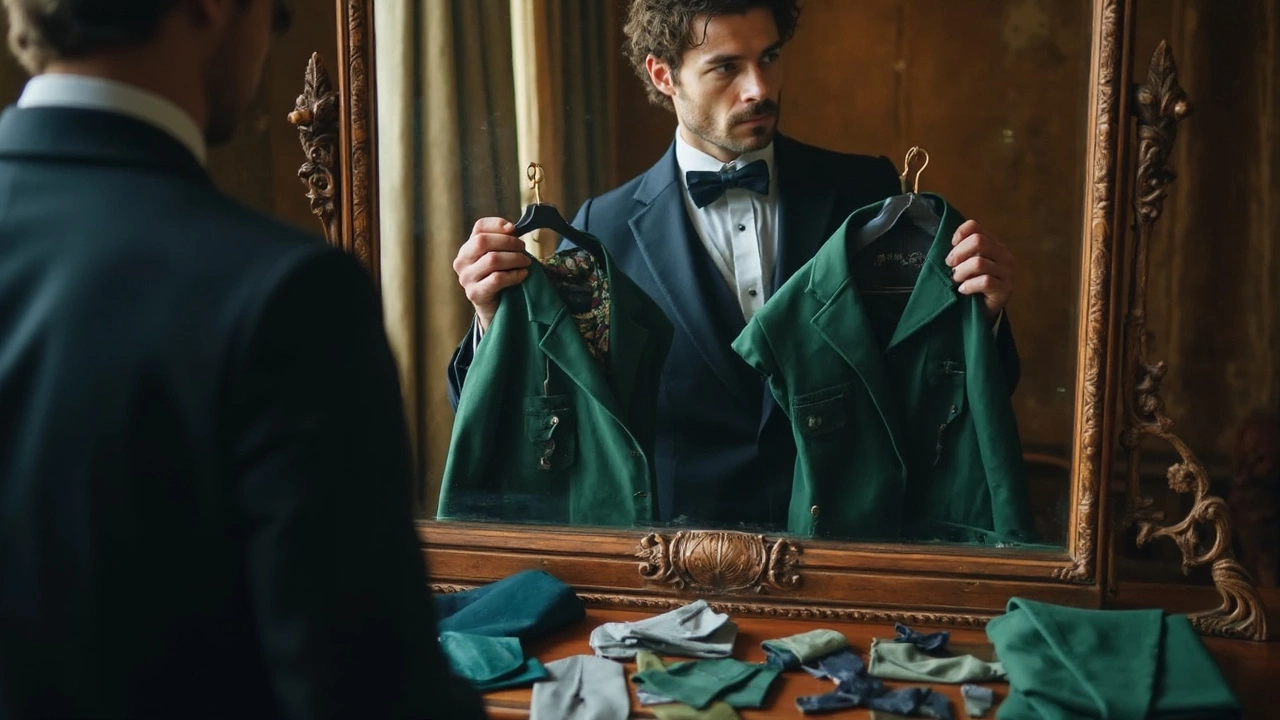Wedding Suits: Your Simple Guide to Picking the Perfect Look
Choosing a suit for your wedding can feel overwhelming, but it doesn’t have to be. The right suit shows off your personality, fits the venue, and makes you feel confident. Below you’ll find straight‑forward steps to narrow down options, test the fit, and add the finishing touches.
First things first – fit is king. A well‑tailored suit looks better than the most expensive fabric that hangs loosely. When you try on a jacket, the shoulders should sit perfectly without pulling or gaps. The sleeves need to show about a quarter‑inch of shirt cuff, and the trousers should have a clean break at the shoe.
Next, think about the style you want. Classic black or navy works for most formal weddings, while charcoal, deep green, or even a subtle pattern can add personality for less traditional settings. Match the suit style to the overall vibe – a beach ceremony calls for lighter fabrics, while a ballroom event suits richer textures.Fabric matters not just for look but for comfort. Wool is a safe bet for most seasons, offering breathability and a polished finish. Summer weddings benefit from linen or a wool‑linen blend that keeps you cool. If you’re planning an indoor winter ceremony, consider a heavier tweed or velvet for extra warmth and a luxe touch.
Color isn’t limited to black and navy. Charcoal, dark grey, and even deep burgundy can look elegant while still being wedding‑appropriate. If you want to coordinate with your partner’s dress, pick a suit that complements, not clashes. For a monochrome look, match the tie or pocket square to a subtle hue in the bride’s bouquet.
Choosing the Right Suit Style
There are three main cuts to consider: classic, slim, and modern double‑breasted. Classic cuts offer a relaxed silhouette and are forgiving for most body types. Slim cuts create a sharper line and work well for tall, lean grooms. Double‑breasted jackets add a dash of drama, perfect for formal or vintage‑themed weddings.
When you try on a suit, move around – sit, walk, and lift your arms. The jacket should stay smooth when you sit, and the pants should stay in place without a belt slipping. If you notice any pulling or sagging, note the area and discuss adjustments with the tailor.
Essential Accessories and Fit Tips
Accessories tie the whole look together. A crisp white shirt is a safe foundation; French cuffs let you add stylish cufflinks. Choose a tie or bow tie that matches your color scheme – a simple solid works for most, while a subtle pattern adds interest without stealing the spotlight.
Shoes should be polished and comfortable. Black Oxfords suit classic looks, while brown brogues pair nicely with navy or grey suits. Don’t forget socks – they should be dark and long enough to stay hidden when you sit.
Lastly, schedule a final fitting a week before the wedding. This gives the tailor time to make any last tweaks. A well‑fitted suit will feel like a second skin, letting you enjoy every moment without fuss.
With these basics in mind, you can confidently pick a wedding suit that looks great, feels comfortable, and matches the style of your big day. Happy planning!

- Jun, 4 2025
- Comments 0